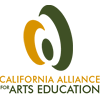Planning Step 1: Define a Practical Vision
The first step in strategic planning is to create a shared, practical vision. By asking the question,
“In 3-5 years, what do we want to see in place in our district’s arts education program?” we are placing ourselves in a position of power.
We have determined the elements of a quality arts education program, and we have familiarized ourselves with the current status of arts education in our own district. Now we need to get practical and specific about what we can implement in the next few years.
Below, you will find a workshop script to guide your team through the process of identifying the key elements of your vision.
Click here [PDF: 53KB] to view sample documentation from the Vision workshop.
STAGE 4 – STEP 1 WORKSHOP | Establishing a Shared Vision
Focus Question
Print or write the focus question on a large sheet of paper and affix to the wall. Make sure it is big and bold enough that all participants can view the question easily (see example below).

Laying the Foundation
The group should first confirm the intended timeframe for the strategic planning process (e.g., 3-5 years). It is important that it is far enough into the future that people can imagine something really can change and be different. This workshop is the first step in the strategic planning process. We will be identifying strengths that provide momentum towards our vision, the challenges or barriers that stand in our way, and the strategies we can use to overcome our challenges and move us toward our shared vision. With that, we will develop a plan that can be put in place over time.
Visualization
In order to have each person in the room open up to creative possibilities, it is exciting to take a little trip into the future. Here is a suggested guided visualization:
| It’s five years from now and the local TV station is doing a documentary on our district’s arts education program. As you guide the cameraman around what do you see in the elementary schools? The middle schools? The high schools? What sounds do you hear? What are people saying about our arts education program? What role did you play in building the program? What are you most proud of? What does the news person take most interest in? What are we talking about in our meetings? How are we managing the program? What was most difficult along the way? What surprised us? What was easy? What makes our program unique and news worthy? |
Brainstorming Ideas
After the visualization, invite the team members to spend a little time brainstorming. Instruct each person to take out a sheet of paper and list 10-12 things you want to see in place in our arts education program in 3-5 years. Be specific. For example, instead of all the arts for all the students, every elementary student has instruction for at least 1 hour per week.
Pair Sharing and Clarifying Ideas
Invite the team members to work in partners and discuss their ideas. Take the clearest ideas and write them out with felt tip marker on half-sheets of paper. The aim is to generate 40-50 ideas among the group. Use the following guide to determine the number of ideas each pair should generate:
10 participants | 5 pairs | 8-9 ideas per pair | 40-45 ideas |
16 participants | 8 pairs | 5-6 ideas per pair | 40-48 ideas |
20 participants | 10 pairs | 4-5 ideas per pair | 40-50 ideas |
To ensure that the ideas are clearly visible to the group when posted, invite the participants to: WRITE BIG, 5-7 WORDS PER SHEET, and 1 IDEA PER SHEET.
Synthesizing the Ideas
Set Up the Wall in Advance
- If a sticky wall is not available, you may want to put several sheets of chart paper up on a blank wall.
- Put half sheets (vertically) as placeholders across the top of your wall with symbols.
Collect and Organize the First Round of Ideas
- The facilitator collects 2-3 half-sheets from each pair. It is helpful to read each idea aloud as you affix it to the wall.
- Ask the group: Are there two half sheets that show a similar accomplishment? Begin to make vertical columns with pairs of half sheets below the blank title sheets.
Collect and Organize the Second Round of Ideas
- The facilitator collects another round of half sheets from the team members. Continue to read the half sheets as you affix them to the wall.
- Continue to categorize them into columns that describe a similar idea or outcome.
Create a Title for Each Column
- Put up a whole sheet of paper at the top of each column and have the group come up with a name that describes the contents of that column.
- The title should be 5-7 words and richly descriptive.
- Consider the following prompts to help the group name each column:
What words in this column stand out to you? (Underline the words.)
What’s your gut reaction/emotional response to the words in this column?
What are some themes, ideas, insights that this column holds?
What name best describes what this column is about?
- Go to a deeper level of consensus rather than just labeling the column; continue until all of the columns are titled.
Closing Conversation
- Which of these ideas speaks personally to you?
- Which do you think would be hardest to implement?
- Which seems easiest?
This has been important work describing specifically and clearly what we want our arts education program to include. Creating a vision that is tangible and vivid will frame the next steps in our planning process, and will motivate our work during the next 5 years. Thanks for your insights and participation.
The facilitator or designee should document the results of the visioning workshop in the form of a table (see example on the next page). The vision will be used for the next steps of the planning process.







